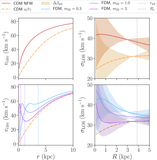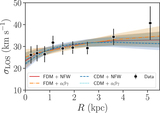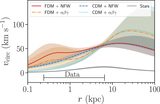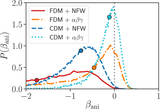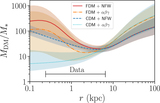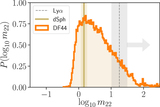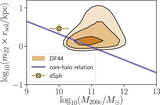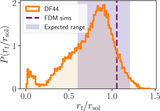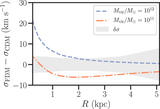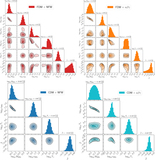Image Details
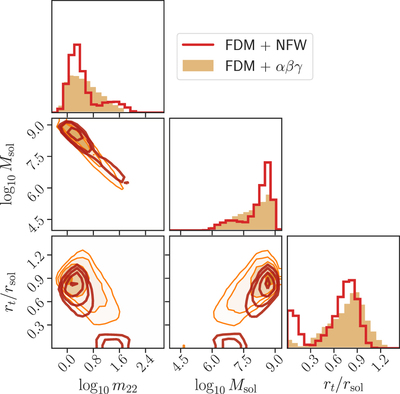
Caption: Figure 6.
Posterior distributions for the scalar field mass in ﹩{10}^{-22}\,\mathrm{eV}﹩, the mass within the soliton core (in ﹩{M}_{\odot }﹩), and the ratio of the transition radius to the soliton core radius for the NFW (red, unfilled histograms) and ﹩\alpha \beta \gamma ﹩ (orange filled histograms) halo models. The FDM constraints are broadly similar between the two halo models, with both models favoring a core of mass ∼109 M⊙. Both models show a mode in m22 of ∼2, with a broad posterior tail toward higher m22 values. For the NFW model, we see a second mode at high m22, corresponding to a negligible core mass and hence a near-zero transition radius.
Copyright and Terms & Conditions
© 2019. The American Astronomical Society. All rights reserved.


